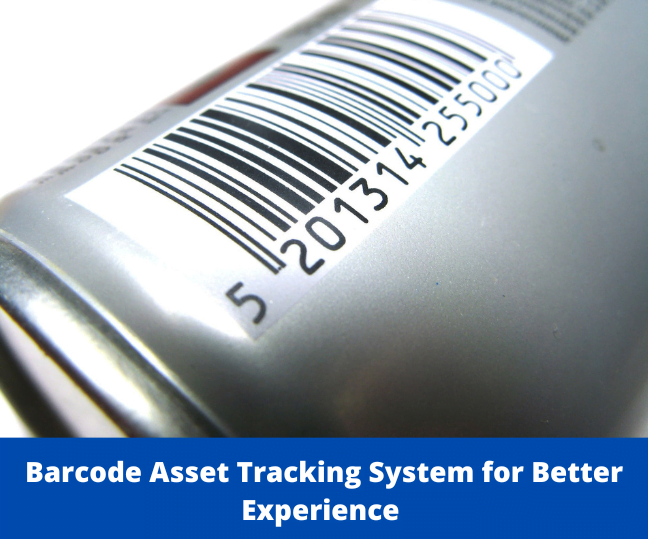Pricing for IT Asset Management (ITAM) solutions depends on software complexity, the number of users or devices it will be deployed on, the level of support provided, and the additional features and functionalities included. Typically, ITAM software is offered through a subscription-based pricing model, where customers pay a recurring fee for the software license and ongoing support and updates.
Related blog: ManageEngine AssetExplorer Pricing 2023
The following factors can influence the cost of ITAM software:
- Scalability: The pricing structure may be based on the number of assets or users being managed by the software. As the number of assets or users increases, the cost may rise accordingly.

- Deployment Model: ITAM software can be offered as on-premises or cloud-based solutions. Cloud-based solutions are typically provided through a Software-as-a-Service (SaaS) model at a subscription fee based on usage. On-premises solutions may involve higher upfront costs for software licenses and infrastructure.
- Functionality and Features: Different ITAM software may offer varying levels of functionality and features. Basic software may focus on inventory management and tracking, while more advanced solutions may include capabilities such as software license management, contract management, compliance reporting, and automation features. The pricing may reflect the level of sophistication and breadth of features provided.
- Support and Maintenance: The cost of ITAM software often includes technical support and ongoing maintenance. Higher levels of support, such as 24/7 assistance or dedicated account managers, may come at an additional cost.
Now, let’s discuss some key features commonly found in ITAM software:
- Asset Inventory: ITAM software allows organizations to create a comprehensive inventory of their IT assets, including hardware devices, software applications, and virtual assets. This feature helps track asset details, such as specifications, ownership, and location.
- Software License Management: ITAM software assists in managing software licenses by tracking license entitlements, usage, and compliance. It helps prevent overspending on unnecessary licenses and ensures compliance with software vendor agreements.
- Contract Management: This feature enables organizations to store and manage contracts related to their IT assets. It helps track contract expiration dates, terms and conditions, and renewal options, ensuring compliance and avoiding penalties.
- Asset Lifecycle Management: ITAM software facilitates tracking the entire lifecycle of assets, from acquisition to retirement. It helps optimize asset utilization, schedule maintenance tasks, and plan for asset replacements or upgrades.
- Compliance and Reporting: ITAM software generates reports on asset utilization, license compliance, and other relevant metrics. These reports aid in decision-making, budgeting, and meeting regulatory requirements.

- Automation and Integration: Advanced ITAM software may offer automation features to streamline asset management processes. It can integrate with other IT systems, such as IT service management (ITSM) software, to enable seamless data exchange and improve efficiency.
- Security and Risk Management: ITAM software helps mitigate security risks by identifying vulnerable assets, tracking software patches and updates, and ensuring compliance with security policies.
These are just a few key features, and the actual functionalities may vary depending on the specific ITAM software solution. It’s important for organizations to evaluate their requirements and select software that aligns with their needs and budget.
What is PDQ Inventory, and how it helps?
PDQ Inventory is a powerful inventory management software designed to assist IT professionals in effectively managing and tracking their assets. It provides comprehensive insights into computer and network device hardware, software, and configurations.
PDQ Inventory can automatically collect and update inventory information from devices on the network. It scans and retrieves detailed data about hardware specifications, installed software, operating system details, and other relevant information. This automated data collection eliminates manual inventory tracking and ensures that the information is accurate and current.

PDQ Inventory offers a centralized console with a clear overview of the devices and their associated details. Administrators can organize devices into groups, making it easier to manage different sets of computers based on departments, locations, or other criteria. This grouping feature allows for targeted management and efficient deployment of software updates, patches, or configuration changes across specific sets of devices. The software also provides robust reporting capabilities, enabling IT professionals to generate customized reports based on various criteria. These reports can include software compliance, hardware inventory, software usage statistics, and more.
Core features of the PDQ Inventory include
Asset Inventory – Hardware Asset Inventory, Software Asset Inventory, Asset Discovery, Asset Tracking, Compliance Tracking, Customizable Fields, Customizable Reports, Data Import/Export, Inventory Management, Maintenance Management Monitoring Management, Central Dashboard, Asset Policy Management
PDQ Inventory Pricing
- PDQ Inventory has three different pricing plans, including a free trial. The basic plan starts at $1500.00/year.
- Enterprise plans cover over 15 licenses; the price is available upon request.
PDQ Inventory Advantages and Disadvantages
PDQ Inventory is a powerful IT asset management tool designed to help system administrators keep track of their hardware and software inventory across their network. It offers several advantages and benefits for managing IT assets efficiently. However, like any software, it also has its limitations and disadvantages. Let’s explore the advantages and disadvantages of the PDQ Inventory.

Advantages of PDQ Inventory:
- Comprehensive Asset Tracking: PDQ Inventory provides a centralized platform for tracking and managing all the assets in an organization’s network. It allows administrators to gather detailed information about hardware configurations, installed software, and other important data related to each device. This comprehensive asset tracking helps in maintaining accurate inventory records.
- Real-time Monitoring: PDQ Inventory offers real-time monitoring capabilities, allowing administrators to view each network device’s status. It provides up-to-date information on hardware changes, software installations, and updates. This enables administrators to promptly identify potential issues, security vulnerabilities, or compliance violations.
- Customizable Reporting: The software provides a variety of built-in reports that can be customized to meet specific requirements. Administrators can generate reports on hardware inventory, software licenses, system vulnerabilities, and more. These reports assist in making informed decisions, planning upgrades, and ensuring software license compliance.
- Automated Deployments: PDQ Inventory integrates with PDQ Deploy, another software from the same company. This integration enables seamless automation of software deployments and updates. Administrators can create deployment packages and push them to target devices, saving time and effort on manual installations.
Disadvantages of PDQ Inventory:
- Cost: PDQ Inventory is a commercial software product requiring a license. Depending on the organization’s size and requirements, the cost of acquiring licenses may be a disadvantage for some smaller businesses or tight budgets.
- Limited OS Support: PDQ Inventory primarily focuses on Windows-based environments. While it provides some support for Linux and macOS, its features and capabilities may be limited compared to Windows systems. Organizations heavily reliant on non-Windows platforms may find PDQ Inventory less suitable for their needs.
- Network Dependency: PDQ Inventory relies on network connectivity to gather data and perform management tasks. The software’s effectiveness may be reduced when the network is unstable, or devices are offline. Additionally, large-scale deployments may require robust network infrastructure to handle the increased traffic and data synchronization.

PDQ Inventory offers valuable advantages in terms of comprehensive asset inventory and management, real-time monitoring, customizable reporting, automated deployments, and centralized software management. However, it also has limitations, including cost, learning curve, limited OS support, network dependency, and complexities in diverse network environments. Organizations considering PDQ Inventory should carefully evaluate their needs and assess how well the software aligns with their requirements.
Infraon Assets and PDQ Inventory are both popular software solutions used for asset management and inventory tracking in organizations. While both products offer similar functionalities, distinct pricing advantages set Infraon Assets apart from PDQ Inventory.
Infraon Assets typically offers a more cost-effective pricing structure compared to PDQ Inventory. It may provide flexible pricing options, including monthly or annual subscription plans, which allow businesses to choose a payment model that aligns with their budget and usage requirements. PDQ Inventory, on the other hand, may have a fixed pricing structure that may be more rigid and less adaptable to varying business needs.
The Final Verdict on PDQ Inventory Pricing
When it comes to selecting an inventory management solution for your organization, pricing plays a crucial role in the decision-making process. Two popular options in the market are PDQ Inventory and Infraon Assets.
Infraon Asset adopts a more cost-effective approach, providing a more financially sustainable solution in the long run. The pricing structure starts with the Essential plan at $15/ month/ agent.
Infraon Assets streamlines and optimizes asset management processes at affordable pricing. Core features of Infraon Assets include:
- Asset Tracking
- Barcode and QR Code Integration
- Maintenance Management
- Depreciation and Financial Reporting
- Asset Reservation and Check-in/Check-out
- Mobile Accessibility.
- Integration and Data Import/Export
- Reporting and Analytics
- User Access Control
Over and above the features, Infraon Asset offers competitive pricing to suit businesses, small and large. Their pricing plans include
- Essential Plan – 500 assets at $49 monthly
- Standard Plan – 500 assets at $66 monthly
- Professional for 1000 plus assets at $185 monthly.
- Enterprise for organizations focusing on end-to-end IT Asset Management. (Both Agent and Agent-less) offers customized prices upon request.
Related article: Ivanti Neurons for ITSM Pricing 2023
Frequently Asked Questions
Who are some PDQ Inventory competitors?
- Infraon Assets streamlines the management of physical assets across industries. It offers asset tracking, maintenance management, vendor management, and compliance tracking features with a centralized platform for tracking assets, their location, and maintenance history. It also integrates with other enterprise systems and supports mobile access, ensuring real-time visibility and asset control. Infraon Assets is known for its scalability and flexibility, making it suitable for organizations of all sizes.
- Lansweeper is a popular competitor to PDQ Inventory, offering comprehensive network inventory and asset management solutions. It allows users to scan and collect detailed information about their network’s hardware, software, and other assets. Lansweeper provides automatic scanning, custom reporting, software license management, and IT asset tracking features. It also offers integrations with other tools and platforms, providing a holistic solution for managing network inventory and assets.
- ManageEngine AssetExplorer is a comprehensive IT asset management software that competes with PDQ Inventory. It offers features such as asset discovery, software and hardware inventory, software license management, and vendor management. AssetExplorer allows users to automate asset tracking and monitoring, streamline procurement processes, and generate detailed reports. It provides a user-friendly interface, customization options, and integration capabilities with other IT management tools.
- Ivanti Asset Manager is a powerful competitor to PDQ Inventory, offering various asset management capabilities. It provides features such as asset discovery, hardware and software inventory, software license management, and contract management. Ivanti Asset Manager allows users to track assets throughout their lifecycle, optimize software license usage, and ensure compliance with licensing agreements. It offers a centralized dashboard, robust reporting options, and integration with other Ivanti solutions for comprehensive IT asset management.
These competitors offer varying features and functionalities, catering to organizations’ different needs and preferences, seeking network inventory and asset management solutions. Ultimately, the choice between them depends on specific requirements, budget, and the overall IT infrastructure of the organization.
Who is Infraon for?
Infraon specializes in providing solutions and services for a wide range of clients, including individuals, businesses, and organizations across various industries. By leveraging their expertise in asset management, Infraon also provides tailored solutions and services to help clients optimize asset performance, minimize risks, and achieve their specific objectives.




















